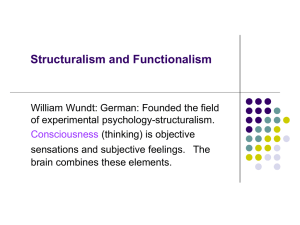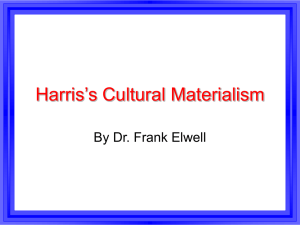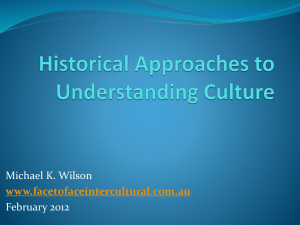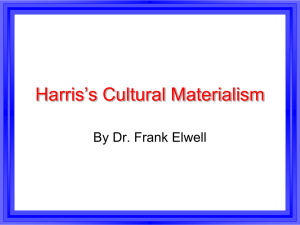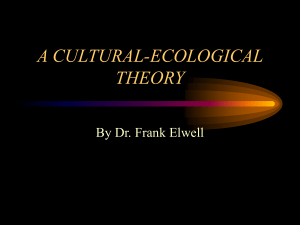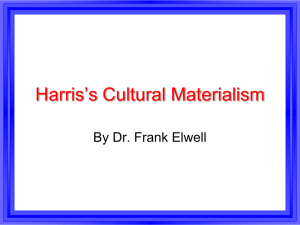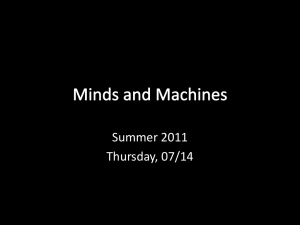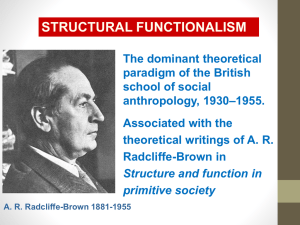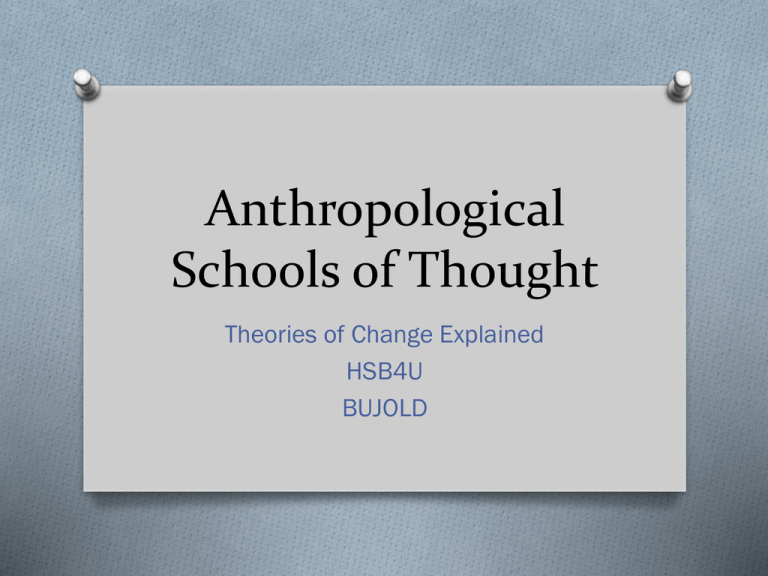
Anthropological
Schools of Thought
Theories of Change Explained
HSB4U
BUJOLD
Functionalism
O Functionalists are interested in how society
maintains stability and social order.
O What brings social stability?
What Brings Social Stability?
O 1. Cultural patterns and traditions. They
diffuse disruptive or ‘dynamic’ forces
causing change.
O E.g. Graduated Driver’s License
Stability?
O 2. Social Institutions bring stability and
attempts to meet the needs of the majority.
O E.g. The family brings stability to reproductive
and educational functions.
O However, some families are dysfunctional.
Functionalism continued
O Over time institutions become complex.
O E.g. Schools, industry, law
O New institutions generate new social norms,
roles and/or expectations.
O E.g. MADD
Functionalism
Basic Need or
Universal
Problem
(psychological
or physical)
Initial Cultural How it brings
response and stability.
how it
developed.
Custom/Pract
ice/Tradition
or institution
created.
The need for
food.
(physical
need)
• People
were
huntergatherers
• Eventually
they
farmed
• Eventually
we kept
food
supplies
• Economics
& jobs to
get $$
• Grocery
Stores
stock food
supplies
There is a
constant
renewal of
the food
supply.
Application Activity
O Using the chart headers on the last slide,
apply Functionalism to two of the following:
O A. Personal and Family Safety
O B. The need to relax
O C. The need to reproduce
O D. The need for bodily comforts such as
clothes and a home
O E. The need to feel connected to others
Structuralism
O Structuralism believes that in every situation
there are two opposing things.
O This Binary Opposition is believed to be a
fundamental organizer of human thought
and culture.
O Binary opposites creates a hierarchy
whereby one of the two terms govern the
other.
O For example male is seen as dominant over
female.
Binary Opposition
Male
Female
Dominant
Submissive
Strong
Weak
In Control
Dependent
Ferocious
Gentle
Rational
Emotional
Assertive
Accommodating
Male/Female
O Maleness is higher on the hierarchy.
O Societal Rules are determined by the
relationship between the opposites.
O For example:
O Men are paid more than women.
O More men are CEO’s than women.
O There are more male sports icons than there
are women.
Ge Tribe of the Amazon
O This society is based on binary opposition
and synthesis.
O The Ge divide their village into two halves.
O They are rivals to each other however when
members of the tribe marry they must
choose a mate from the opposite group.
Christian Holidays and Binary
Opposition.
O Solemn and sacred occasions are often
followed or preceded by a taboo-breaking or
‘profane’ celebration.
O E.g.
O Christmas is followed by New Year.
O Lent follows Mardi Gras (Pancake Tuesday)
O Easter Week ends with a visit from the Easter
Bunny.
Cultural Materialism
O Cultural materialism explains cultural
similarities and differences as well as
models for cultural change using a
framework consisting of three distinct levels:
infrastructure, structure and superstructure
Infrastructure
O Infrastructure consists of “material realities”
such as technology, economics, resources
like labour and reproductive (demographic)
factors.
O These mold and influence the other two
aspects of culture.
O E.g. The Nuer Tribe of South Africa has a
Pastoral economic system, meaning its
wealth is measured in cattle.
Structure
O Structure consists of organizational aspects
of culture such as domestic and kinship
systems and political systems, laws and
family systems, education, and production.
O E.g. Decisions regarding marriage is based
on the transfer of cattle from the bride’s
family to the groom’s.
Superstructure
O Superstructure consists of social institutions
such as laws, religion, politics, art, science,
superstitions, values, emotions,
traditions…..
O E.g. Tradition-there is a strict list of who gets
how many cattle in the extended family.
Superstructure
O Law-all children of the bride legally belong to
the husband even if the wife leaves the
husband to live with another man.
O Values-The system favours men in terms of
the bride-wealth transfer and attempts to
maintain economic equality.
Cultural Materialism
Application
O Use the theory to explain the growth of Milton.
O Infrastructure
O 1. Which material reality caused change;
technology, demographics and/or economics?
O Structure
O 2. How has the growth in Milton altered
education?
O Superstructure
O 3. Has the growth of Milton affected the laws,
religion, arts or traditions?
Cultural Materialism &
Kinship
O InfrastructureO Reproduction
O Structure-Patterns in Society are to create
O kinship structures and family units
O Superstructure-has laws both written and
unwritten
O about parental responsibility, nurturance,
marriage, sexual contact….


